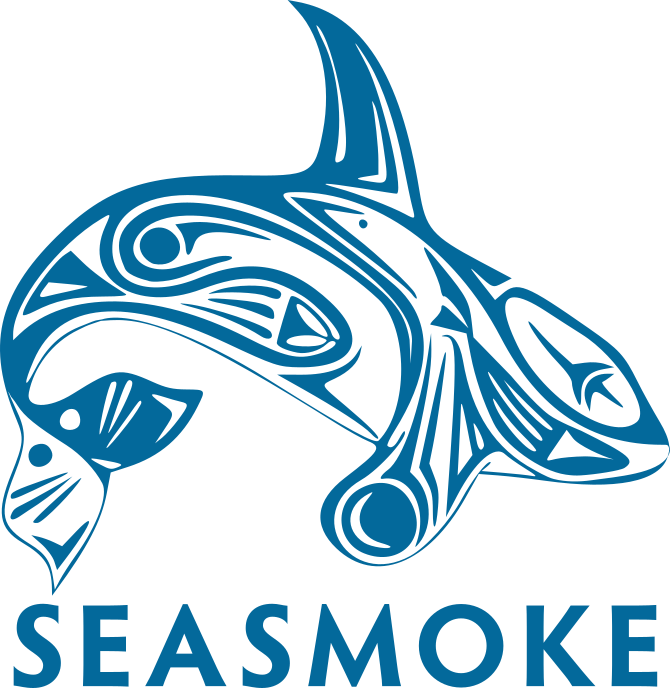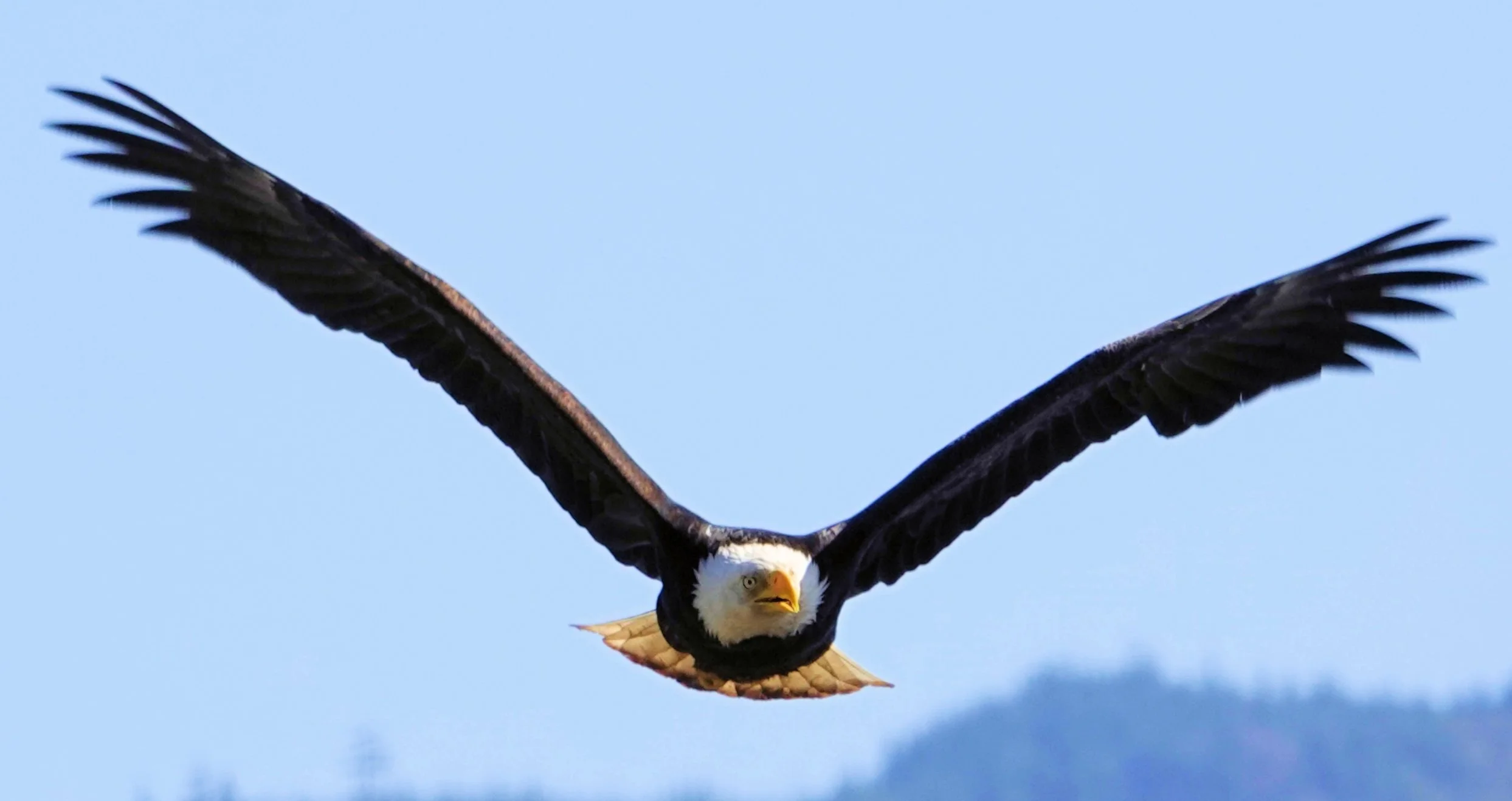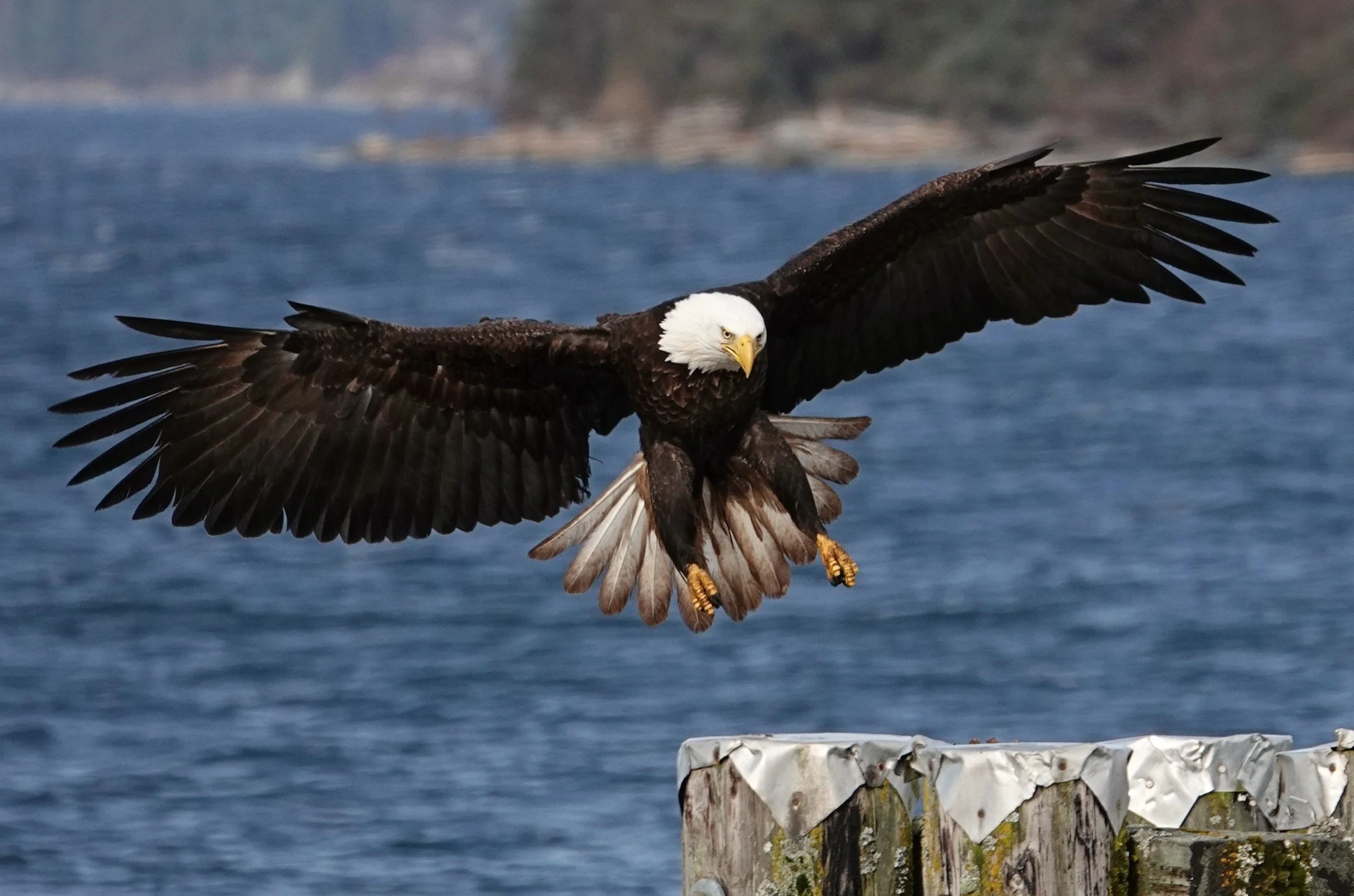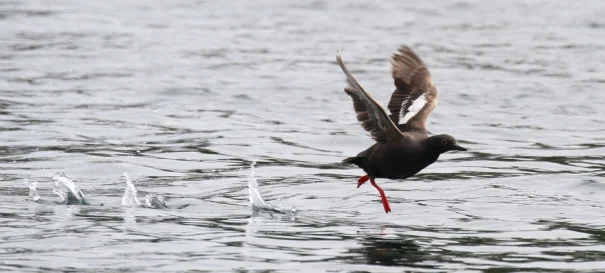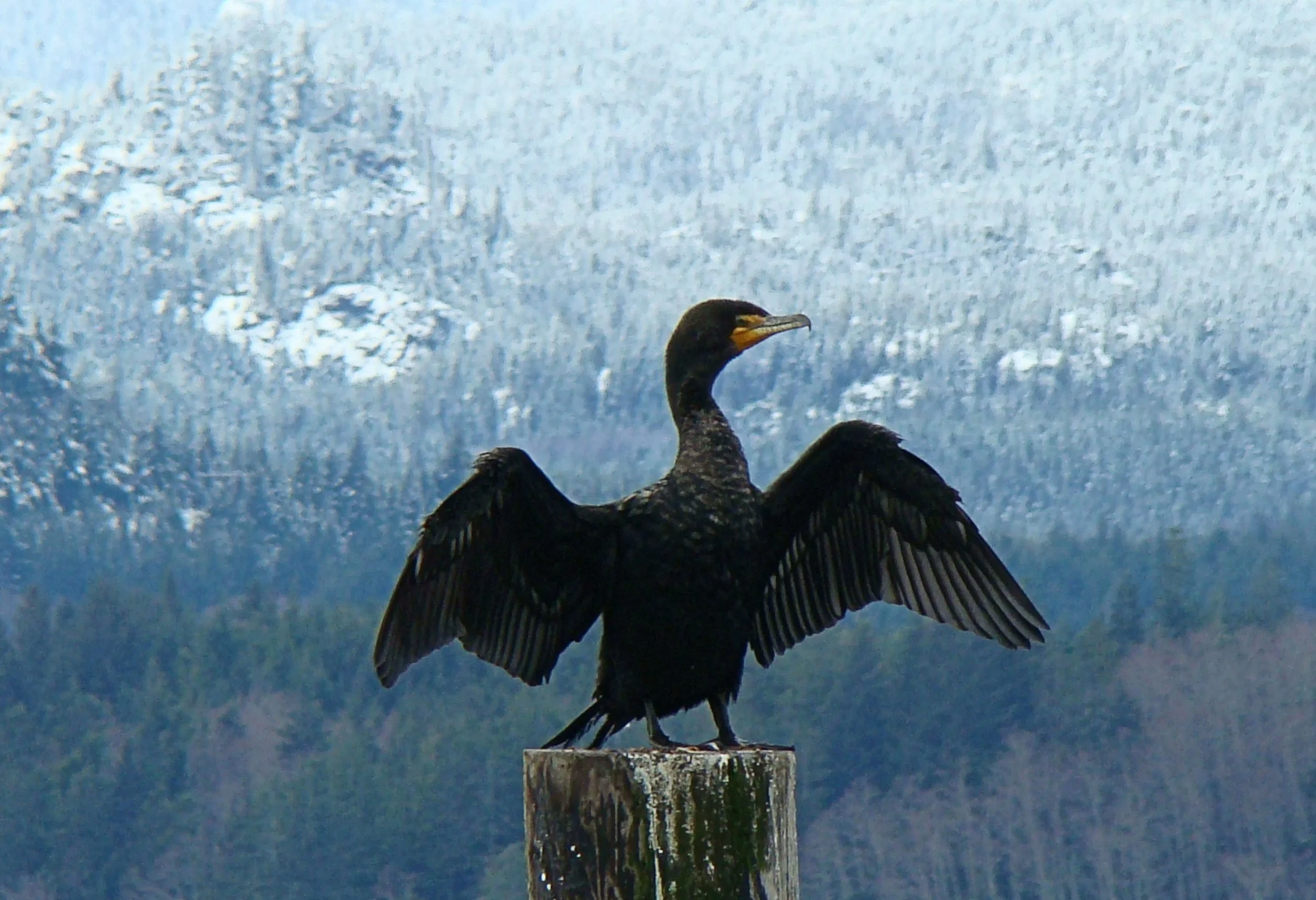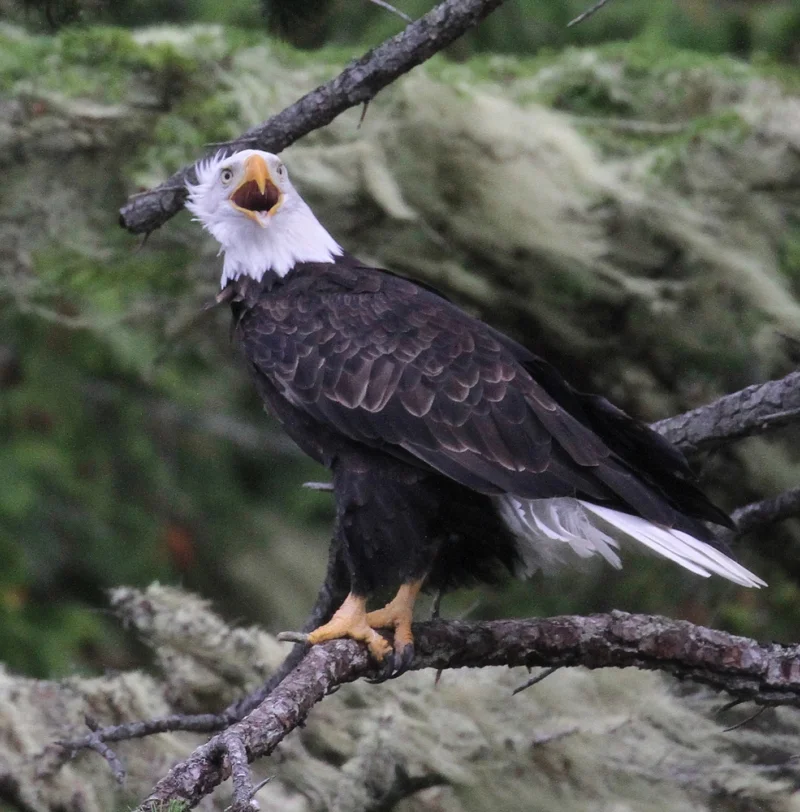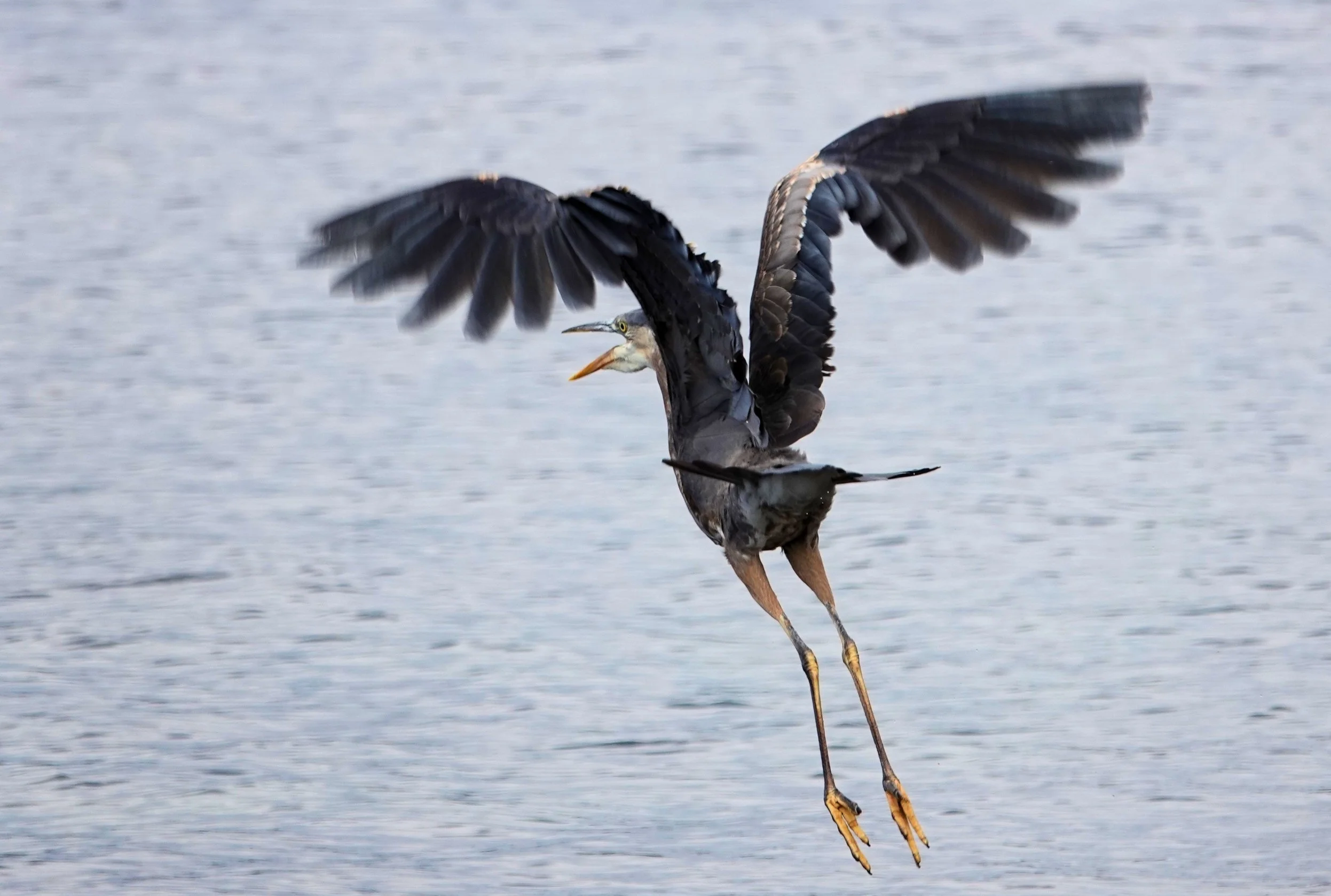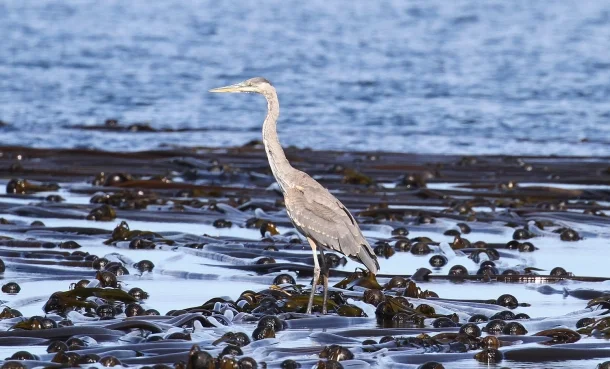Birds
The sea surface, shoreline, and sky around Alert Bay and Alder Bay are home to numerous species of marine birds. Some reside here year-round, some are migratory, and others are only occasionally observed.
Species we see on a regular basis include Bald Eagles, Glaucous-Winged Gulls, Herring Gulls, California Gulls, Bonaparte Gulls , Belted Kingfishers, Great Blue Herons, Rhinoceros Auklets, Cassin’s Auklets, Common Murres, Marbled Murrelets, Ancient Murrelets, Pigeon Guillemots, Harlequin Ducks, Black Oystercatchers, Black Turnstones, Surf, White-winged and Black Scoters, Red-necked Phalaropes, Leach’s Storm Petrels, Fork-tailed Storm Petrels, and Sooty Shearwaters.
Every day out on the water we are viewing birds and learning.
Much of our local area in the region of Broughton Strait, Johnstone Strait and Queen Charlotte Strait is steep and rocky with habitats that include forested and rocky islands, rocky shores, estuaries, sheltered bays, kelp and eel grass beds, tidal upwellings, mud flats, and open marine waters.
Fresh and salt water mixing along with levels of ocean turbulence enhances plankton growth. This in turn supports an abundance and variety of fishes, snails, eels, clams and crustaceans which provide food for birds. As a result the region is a critical area in the world for water birds throughout the year.
Over a 100 species of marine birds, from numerous countries and three continents breed, migrate and / or spend the winter here. Throughout the months that we operate our whale watching and marine wildlife viewing tours, we get to view a variety of seabirds.
Birds common to the area year round that we see daily while on tour: Bald Eagles (their nests and Eaglets when hatched) Great Blue Herons, Pelagic Cormorants, and gulls: Bonaparte’s, Mew, Herring and Glaucous- Winged.
Other species we see over the summer months include: Harlequin Ducks, Surf Scoters, White-Winged and Black Scoters, Black Oyster Catchers, Common Murres, Pigeon Guillemots, Marbled Murrelets, Rhinoceros Auklets, Belted Kingfishers, Red-Necked Phalaropes, Herring and Bonaparte’s Gulls.
The month of September brings greater numbers of birds. Of special interest are the arrival of large flocks of Sooty Shearwaters stopping to feed and rest before continuing on their journey south, where they will breed off the coast of New Zealand and Antarctica. Large gatherings of Common Murre, Rhinoceros Auklets, Surf and White-Winged Scoters will also be viewed at this time. In Fall, Winter and Spring we continue to Bird Watch!
From Alert Bay and Alder Bay we are rewarded with the sight and activity of seabirds, River otters, Mink, Harbour seals and occasionally Humpback whales, Resident and Transient orcas and Minke whales passing by.
Most common bird species to be seen in November through April are Pelagic Cormorants, Double-Crested Cormorants, Great Blue Herons, Buffleheads, Barrow’s Goldeneye, Common Goldeneye, Common Mergansers, Hooded Mergansers, Red-Breasted Mergansers, Harlequin Ducks, Common Loons, Pacific Loons, Red-Necked Grebes, Western Grebes, Herring and Bonaparte’s Gulls a few Greater and Lesser Scaups.
Belted Kingfishers are frequently observed diving for small fish as well, Great Blue Herons often frequent the shorelines when the tides are low, where they can be seen fishing on the shore.
The Ecological Park in Alert Bay on Cormorant Island is a unique place from which to view birds year round. The sound of Northern Flickers working on dead Cedar trees in the Park are wonderful to listen to and Bald Eagles can be viewed sitting high on top of the cedar trees.
A dedicated bird watcher or amateur naturalist may well find a visit to Cormorant Island fascinating and
enjoyable.
